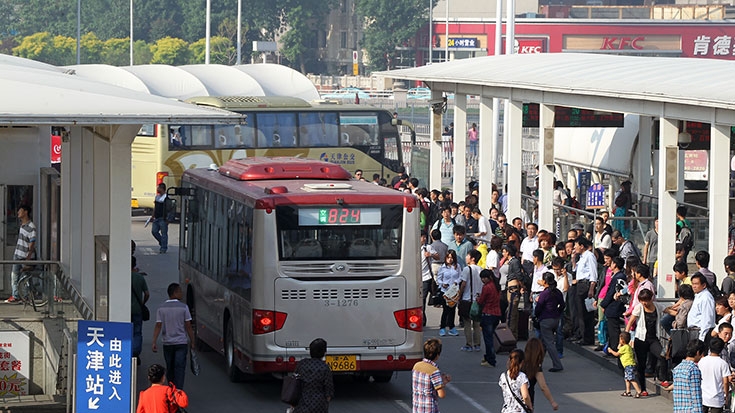Beijing, China – "Transit-oriented development,” or TOD — creating well-designed, walkable communities around a mass transit system, with a dense mix of housing, retail, offices or other amenities — is an increasingly important urban form.
When this type of development is done well, real estate market responds, generating substantial increase in property value. Such value can then be captured through Land Value Capture (LVC) mechanisms to finance transit as well as improvements around neighborhoods.
These two topics came together recently, and were discussed extensively at a workshop co-organized by the World Bank and the Institute of Comprehensive Transport of the National Development and Reform Commission, bringing together over 120 Chinese national and local government policymakers, urban and transport planners, transit agencies, private developers, researchers and international experts.
Why Transit-oriented Development & Land Value Capture matter
To kick off the workshop, the Chinese edition of a new World Bank publication titled “Transforming Cities with Transit” was presented by Sun Mingzheng, Deputy Chief Engineer of the Beijing Transport Research Center, which produced the Chinese translation of the book, and Hiroaki Suzuki, a World Bank lead urban specialist and main author of the book.
"Unprecedented opportunities have arisen for the successful integration of transit and land development in much of the developing world,” Suzuki said.
Jay Walder, CEO of MTR Corporation, Hong Kong, China, shared the Hong Kong experience which has “some unique lessons for the urbanization we are seeing today”.
"Hong Kong’s metro was built on what we now call the Rail plus Property Model,” he told the audience. “This not only provided the essential transit connections that the city desperately needed but it helped to address the housing problem that the city was facing as well.”
"New rail lines are financed over the long-term by providing the rail operator with land development rights along the alignment,” he explained.
Robert Cervero, Professor at UC Berkeley, gave a comprehensive overview of Transit-oriented Development, from its concept to how to successfully implement it.
Countries like China, which is rapidly urbanizing, modernizing and motorizing, are where TOD holds most promise, he pointed out. “Transit should be more than ‘mobility’ investments for relieving traffic congestion. Transit actually presents city-shaping opportunities, which should be exploited.”
Luc Nadal, Technical Director, Institute for Transportation & Development Policy, presented the principles to evaluate TOD. “The future belongs to cities with sophisticated and integrated transportation systems that minimize the wasteful, inefficient, unattractive infrastructure for private cars,” he said.
Jin Murakami, Assistant Professor, City University of Hong Kong, enumerated key lessons on Land Value Capture from global practices, citing Hong Kong, Tokyo, Delhi, Hyderabad, and Sao Paulo as examples.
Wataru Tanaka, chief urban planner and designer of Nikken Sekkei Ltd. shared Japan’s experience in rail-integrated urban development with examples from Tokyo and Yokohama, such as adding cultural functions to transit hubs, utilizing natural energy and creating a city identity with symbolic design.

